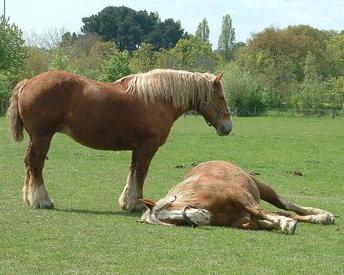
The Breton is believed to be a horse of old, with one theory suggesting an origin of 4,000 years ago. At this time, the ancient Aryan people of Asia were migrating through Europe, bringing their heavy working horses with them.
The accuracy of this is uncertain, with others believing it was in fact the Celts that first introduced draught horses to Europe during their infamous Great British conquest.
The Breton of today was developed and refined in Brittany and is now recognised in three variations including the Corlay Breton, the smallest subtype which is now extremely rare, the Postier Breton, traditionally utilised in farm work, and the Heavy Draught Breton, the largest subtype used in the most demanding of farming capacities.
Developed to be tireless and to endure the rigours of landscape, weather and working life, the Breton is stocky, heavy boned and strong enough to fulfil many agricultural tasks. The breed is relatively short in length and boasts a typical height of 15-16 hands. The most common example of a Breton is chestnut coated with a flaxen-coloured mane and tail, although variations of bay, roan and grey are seen.
Like the Ardennes horse, the similarly built Breton is considered a delicacy in some parts of Europe and is primarily bred for its meat in native France.
Do you own a Breton Horse? Let others know what they're like!
Related products
Advantage 80 Spot On Flea Control Large Cats and Rabbits
from £12.95
Advantage 40 Spot On Flea Control Cats, Small Dogs and Rabbits
from £12.95
Advantage 100 Spot On Flea Control Medium Dog
from £12.95
Advantage 250 Spot On Flea Control Large Dog
from £12.95
Drontal Tasty Bone Wormer Tablets for Small & Medium Dogs (2 to 20kg)
from £2.15
FRONTLINE Plus Flea & Tick Treatment Dogs & Cats
from £17.49
TermaWorm™ Tablets for Cats & Dogs
from £1.59
Drontal Tasty Bone XL Wormer Tablets for Large Dogs (Over 20kg)
from £6.39